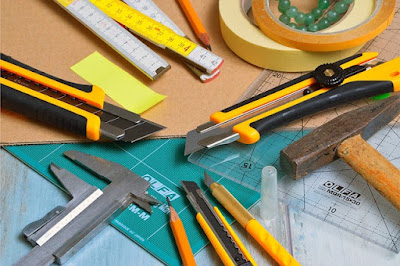The Complete Guide to Woodworking for Beginners
Beginner Woodworking: Your Ultimate Starter Guide to Building Skills & Confidence
Dreaming of building beautiful furniture and custom pieces with your own hands? Woodworking is one of the most rewarding hobbies you can pick up—it’s creative, practical, and can even become a source of income.
But if you’re a total beginner, it can feel overwhelming. Where do you even start? This guide cuts through the noise and gives you the exact roadmap you need to go from absolute novice to confident builder, without wasting money or time.
 |
Your First 5 Tools: What You REALLY Need to Start
Forget the fancy catalogs. You can build your first projects with just a handful of core tools. Start with this list:
- Tape Measure: Your most used tool. Don’t cheap out.
- Combination Square: For perfect 90° marks and checks.
- Circular Saw: The most versatile power tool for breaking down sheet goods.
- Power Drill/Driver: Essential for drilling holes and driving screws.
- Clamps: You’ll always need more. Start with two 24" bar clamps.
Pro Tip: Buying used tools (Facebook Marketplace, garage sales) is a fantastic way to save money on quality brands.
Want a done-for-you list of vetted tools that won’t break the bank? The Ultimate Small Shop Guide includes a full beginner tool checklist.
Wood 101: Choosing the Right Lumber for Your Project
Not all wood is created equal. Here’s a simple breakdown:
- Pine & other Softwoods: Inexpensive, soft, and easy to work with. Perfect for practice projects and rustic looks. (Can dent easily).
- Oak, Maple & other Hardwoods: More expensive and durable. Ideal for fine furniture that lasts generations.
- Plywood: Great for cabinets, shop furniture, and structural parts. Use furniture-grade ply for visible surfaces.
Always choose boards with a straight grain and minimal knots for easier, more predictable results.
Shop Setup: How to Create a Workshop Anywhere
You don’t need a giant garage. A corner of a basement, a shed, or even a balcony can work. Focus on these four pillars:
- Lighting: See every cut and mark clearly with bright LED shop lights.
- Power: Use a quality extension cord and power strip if outlets are far.
- Work Surface: A sturdy workbench is key. A solid door on sawhorses is a great cheap start.
- Storage: Keep tools off the bench. Use wall-mounted pegboard or DIY shelving.
Safety is NOT Optional: Protect Yourself
This is the most important section. Always:
- Wear safety glasses (every single time).
- Use hearing protection with power tools.
- Avoid loose clothing and jewelry.
- Keep your space clean to avoid tripping.
- Never remove safety guards from tools.
3 Can’t-Fail Beginner Projects to Build Tonight
Start with these simple, high-reward projects to practice your skills:
- A Simple Shelf: Master straight cuts and drilling.
- A Basic Box: Learn squaring and assembly.
- A Cutting Board: Practice gluing and sanding.
The fastest way to learn is by following step-by-step plans. Grab free plans for these projects here.
From Hobby to Income: How to Make Money Woodworking
Once you’ve built confidence, you can turn your passion into profit. The best starter items to sell are simple, high-demand products:
- Custom Cutting Boards
- Floating Shelves
- Planter Boxes
- Simple Furniture (benches, coffee tables)
Sell locally on Facebook Marketplace or at craft fairs to start. For a complete blueprint on starting a business, check out how to Build a Profitable Woodworking Business.
Ready to Start Your Woodworking Journey?
The biggest hurdle is just beginning. You have two paths:
- The Hard Way: Spend months Googling, wasting money on the wrong tools, and learning through frustrating mistakes.
- The Smart Way: Follow a proven system used by thousands of beginners.
The Ultimate Small Shop Guide is that system. It gives you everything:
- The exact tool list for any budget.
- Step-by-step plans to build your shop.
- Beginner-friendly project plans to practice on.
- Secrets to saving money on lumber and tools.
Get the Guide & Start Building This Weekend →
Woodworking involves inherent risks. Always follow safety protocols, wear appropriate protective equipment, and use tools according to manufacturers' guidelines. We are not liable for any injuries, damages, or losses resulting from the use of information or projects on this blog






.jpeg)

.jpeg)
